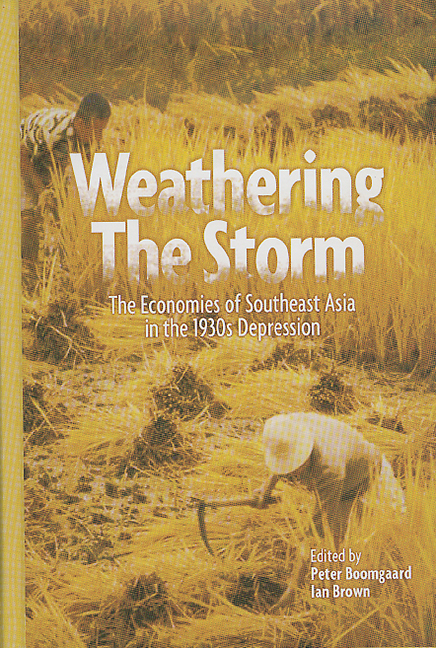
-
Select format
-
- Publisher:
- ISEAS–Yusof Ishak Institute
- Publication date:
- October 2015
- January 2001
- ISBN:
- 9789812305077
- 9789812300805
- 9789812300799
- Dimensions:
- Weight & Pages:
- 00kg,
- Dimensions:
- Weight & Pages:
- 00kg,
- Series:
- Books and Monographs
- Subjects:
- History, Economic History
You may already have access via personal or institutional login- Series:
- Books and Monographs
- Subjects:
- History, Economic History
Book description
The principal cause of the 1930s depression in Southeast Asia lay outside the region - through a sharp contraction in demand for the region's major commodity exports. But it had important internal causes too: an oversupply of primary commodities and an increasing scarcity of new agricultural land leading to higher rents and lower wages, rising indebtedness and increasing landlessness. This work thoroughly analyses the pre-war depression. It also looks at the changes in the basic structures of the economies of Southeast Asia that were of long-term importance, such as the role of the state in the economy. The authors also draw similarities and contrasts between the 1930s depression and the 1990s Asian crisis.
Contents
Metrics
Full text views
Full text views help Loading metrics...
Loading metrics...
* Views captured on Cambridge Core between #date#. This data will be updated every 24 hours.
Usage data cannot currently be displayed.
Accessibility standard: Unknown
Why this information is here
This section outlines the accessibility features of this content - including support for screen readers, full keyboard navigation and high-contrast display options. This may not be relevant for you.
Accessibility Information
Accessibility compliance for the PDF of this book is currently unknown and may be updated in the future.

